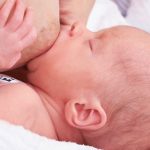 Secretion and production of milk.
Secretion and production of milk.
The process of synthesising and secreting milk from the breasts.
Production and secretion of milk by female mammary glands.
The formation and secretion of milk.
The production of milk in the breasts of the female shortly before and after the birth of a baby, colostrum.
The production of milk in the body.
The period during which a mother is breastfeeding a baby.
Milk production and release by the mammary gland. The process is under the control of the hormone prolactin and can be diminished in poorly nourished mothers. Lactation increases the mother’s need for most nutrients.
Synthesis and secretion of milk by the mammary glands of the breast.
The production and secretion of milk from the breasts after childbirth. The first 2 weeks following birth are crucial for establishing the milk supply, and therefore nursing must be initiated at that time. The breasts produce and secrete colostrum for several days before lactation begins. Colostrum provides the baby with essential nutrients and infection fighting substances until the milk begins to flow. Milk production is a constant and efficient process; 2 hours after breast-feeding, 75 percent of the breast’s milk will have been replenished. Lactation automatically adjusts to the baby’s demand for milk, and the longer and more frequently a baby breast-feeds, the more milk will be produced. The baby’s sucking stimulates milk production.
The secretion of milk by the mammary glands of the breasts, which usually begins at the end of pregnancy. A fluid called colostrum is secreted before the milk is produced; both secretions are released in response to the sucking action of the infant on the nipple. Lactation is controlled by hormones; it stops when the baby is no longer fed at the breast.
The production of milk by the mother’s breast, or the period during which an infant is suckled.
The process of the breasts producing milk or the action of a baby nursing.
